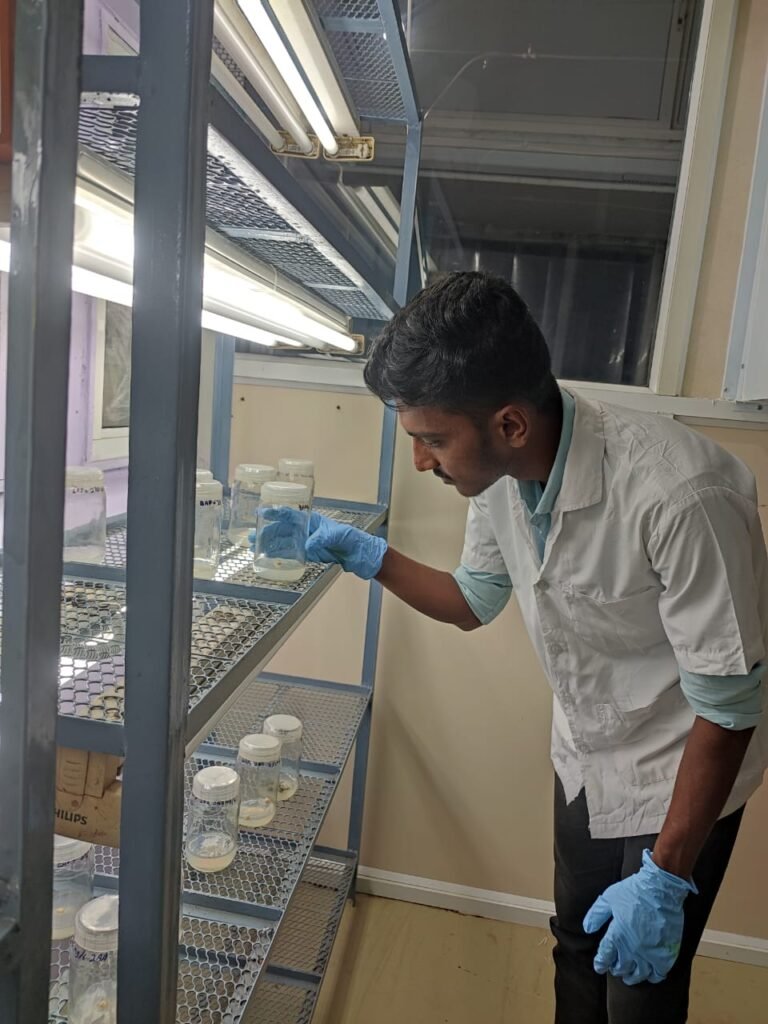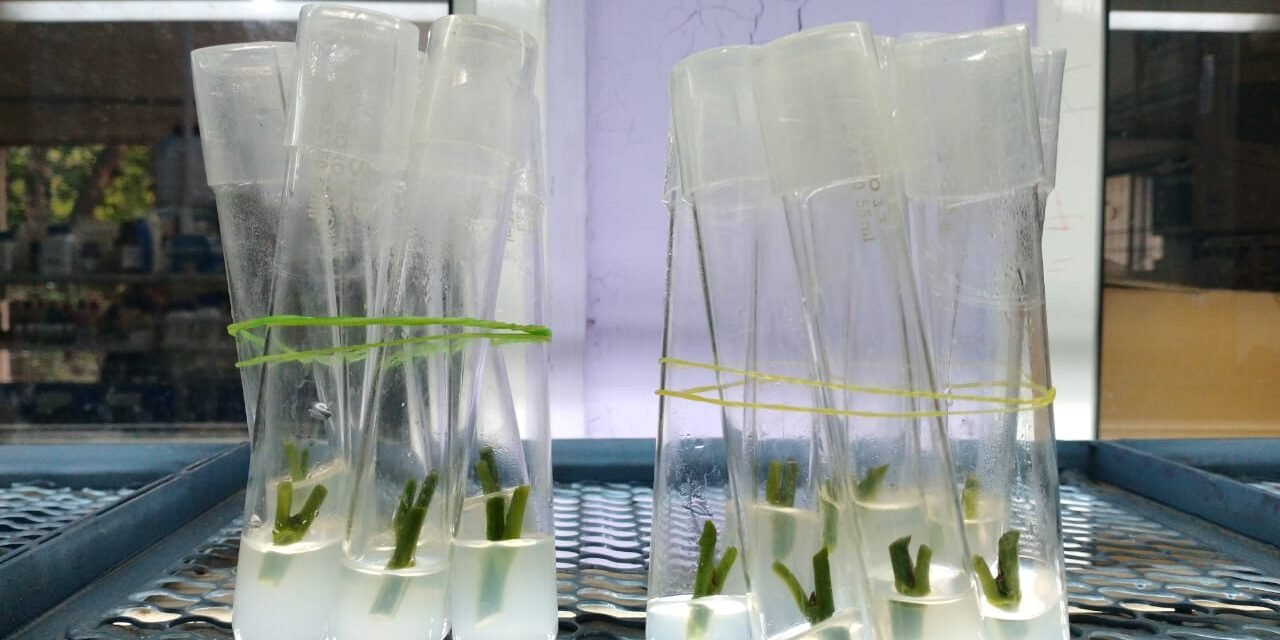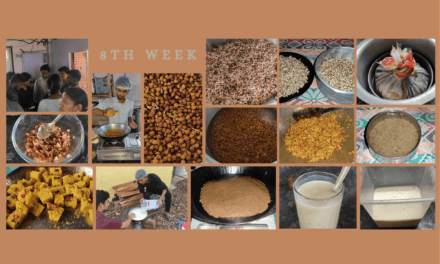Ex- plant : Moringa
INTRODUCTION
Plant tissue culture is a technique used to grow plants in a controlled environment, such as a laboratory or greenhouse. It involves taking small tissue samples from plants and growing them in a nutrient-rich medium, such as agar, to produce new plants.
PRINCIPLES
Plant tissue culture is based on the ability of plant cells to differentiate and regenerate into new plants. This is achieved by providing the cells with the necessary nutrients, hormones, and environmental conditions.
TYPES
- Seed culture: Growing plants from seeds in a controlled environment.
- Meristem culture: Growing plants from the meristematic tissue (actively dividing cells) of shoots or roots.
- Callus culture: Growing plants from undifferentiated cells (callus) that can differentiate into various plant tissues.
- Protoplast culture: Growing plants from individual plant cells (protoplasts) that have had their cell walls removed.
ADVANTAGES
- Rapid multiplication: Quickly produce large numbers of plants.
- Genetic uniformity: Ensure consistent plant quality and characteristics.
- Disease-free plants: Reduce the risk of disease transmission.
- Year-round production: Grow plants regardless of seasonal changes.
STAGES
1.Initiation
2.Establishment
3.Multiplication
4.Differentiation
5.Shooting
6.Rooting
7.Acclimatization
8.Transplantation
MATERIALS REQUIRED
- Conical Flask
- Test tubes
- Petri plates
- Beaker
- Culture Bottles
- Measuring cylinder
- Weighing balance
- Magnetic stirrer
- pH meter
- Laminar air flow
- Autoclave
- Hot air oven
- Water distillation unit
- Refrigerator
STOCK PREPARATION
MACRONUTRIENT STOCK (20X)–500 ML
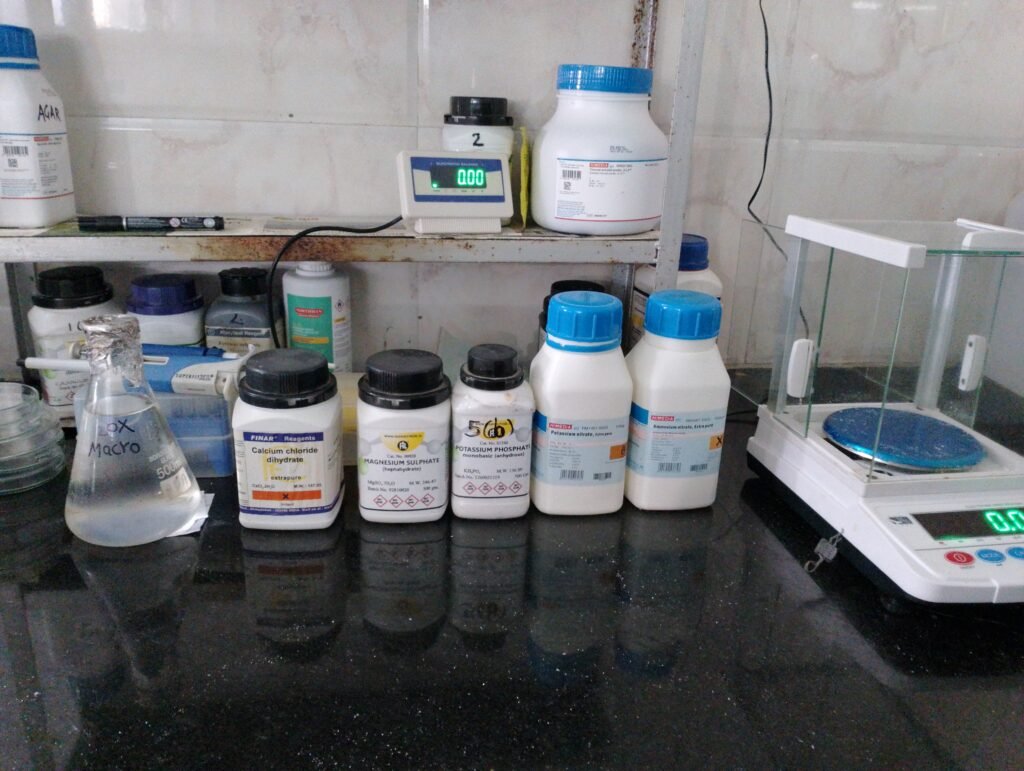
1.For making 20X stock, take 250 ml DW in 500 ml conical flask.
2.Weigh and add below salt one by one,
| INORGANIC SALTS | AMOUNT OF SALT |
| NH4NO3 | 16.5 gm |
| KNO3 | 19 gm |
| KH2PO4 | 1.7 gm |
| MgSo4.7H2O | 3.7 gm |
| caCl2.2H2O OR | 4.4 gm |
| caCL2 (fused) | 3.3 gm |
3.Dissolve it and finally make up the volume to 500 ml by distilled water.
MICRONUTRIENT STOCK (400X)–250 ml
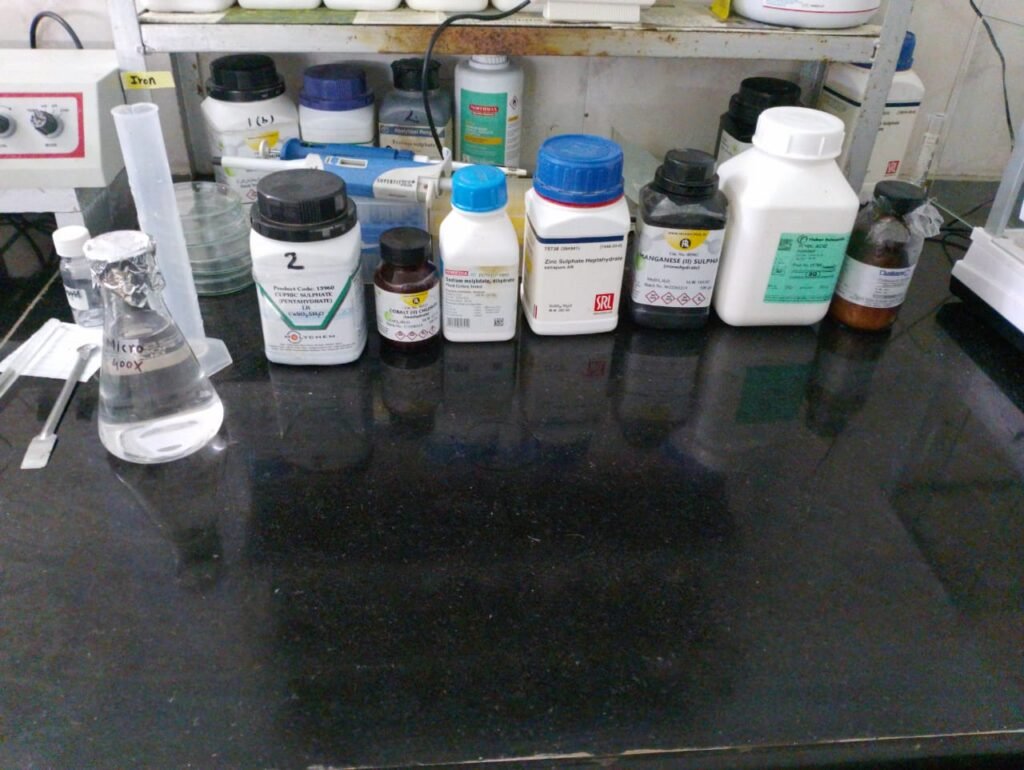
1.For making 400X stock,take 100 ml DW in 250 ml Beaker.
2.weigh each salt and add sequentially,
| INORGANIC SALT | AMOUNT OF SALT |
| KI | 0.083 gm |
| H3BO3 | 0.62 gm |
| MnSO4.4H2O | 2.23 gm |
| ZnSO4.7H2O | 0.86 gm |
| Na2MoO4.2H2O | 0.025 gm |
| CuSO4.5H2O | 0.0025 gm |
| CoCl2.6H2O | 0.0025 gm |
3.Dissolve it and finally make up the volume to 250 ml by distilled water.
VITAMIN STOCK (1000X)–50 ml
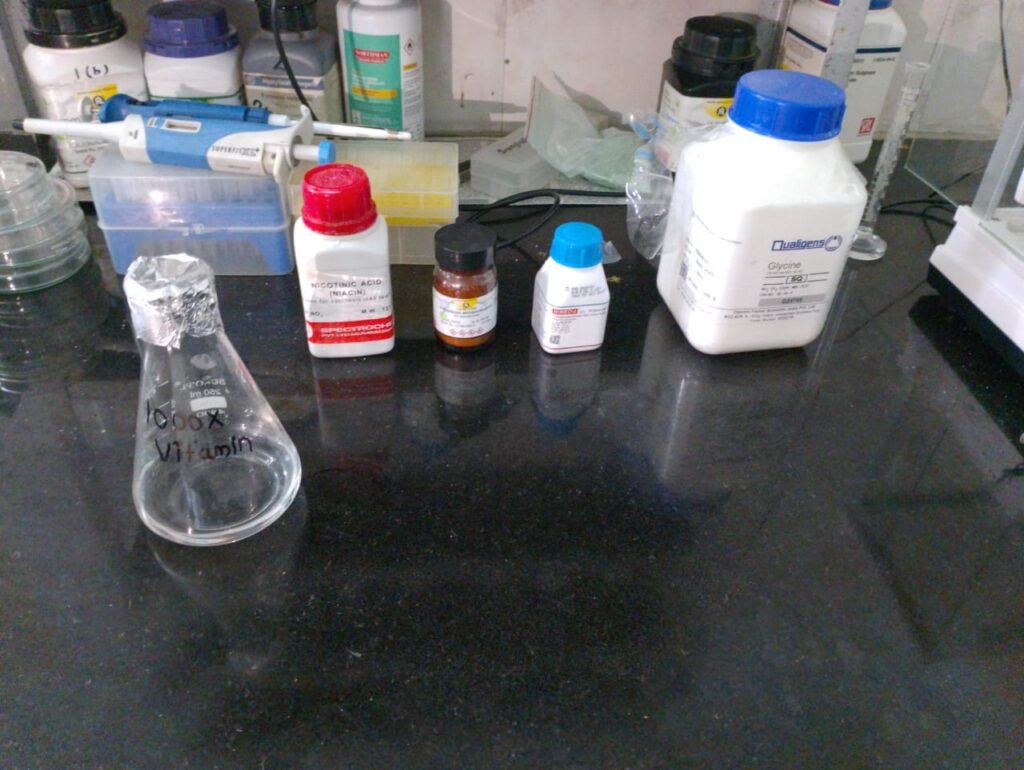
- For making 1000X stock,take 20 ml of DW in 100 ml beaker.
- Weigh each vitamin item, add one by one
| ITEMS | AMOUNT |
| Thiamine HCL | 0.005 gm |
| Pyridoxin HCL | 0.025 gm |
| Nicotinic Acid | 0.025 gm |
| Glycine | 0.1 gm |
3.Dissolve it and make up final volume 50 ml by DW.
IRON STOCK (400X)–250 ml
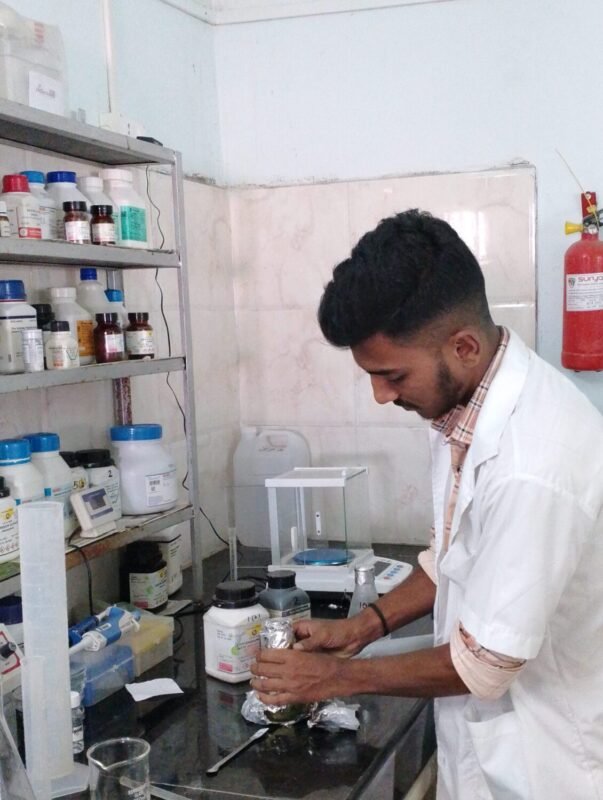
| ITEMS | AMOUNT |
| FeSO4.7H2O | 2.78 gm |
| Na2EDTA.2H2O | 3.73 gm |
1.For making 400X stock, take 100 ml DW in two 500 ml beakers
2.Add above item in each beaker separately
3.After dissolving, mix the both solutions and make up final volume 250 ml.
NOTE;
1.Store stock in Refrigerator.
2.Cover Iron stock with foil paper.
•Mesoinositol or Myoinositol -100 mg/l Weigh 100 mg myoinositol for 1 litre MS media.If media volume is differ,accordingly weighing of myoinositol will differ.
•Sucrose-3%
Weigh 30 g of sucrose for 1 litre MS media.If media volume is differ,accordingly weighing of sucrose will differ.
•Cytokinin, Auxin stock preparation
BAP stock-100mg/100ml (which is 1mg/ml, 10mg/10ml, 100mg/100ml and 1000mg/1000ml) Weigh 100mg of BAP, drop it in 250ml conical flask, dissolve it with ethanol or IM NaOH solution with few drops.Make sure BAP powder dissolve completely, and then make final volume to 100 ml with DW. Use this stock for any working concentrations of MS media.
IBA stock-100mg/100ml (which is 1mg/ml, 10mg/10ml, 100mg/100ml and 1000mg/1000ml)Weigh: 100 mg of IBA, in conical flask, dissolve it with ethanol or 1M NaOH solution with few drops . Make sure IBA powder dissolve completely and then make final volume to 100 ml with distilled water.Use the stock for any working concentrations of MS media.
• Prepare working concentration from cytokinin, auxin stock.
The formula is Stock concentration stock volume = working concentration Media volume1000mg/1000ml x stock volume(ml) = 0.5 mg/1000ml × 500mlstock volume= (0.5 x 500)/1000stock volume = 0.25ml
Therefore, pipette 250 µl and add into 500 ml media. It is important to make mathematical calculations on plane paper before preparing the media.
•pH level– Make pH of media to 5.8-5.9 by using 1M HCI or 1M NaOH.After finalizing pH,make the final volume of media 1000ml (as per media requirement ).
out of this,pour media into beaker i.e 500 ml of media in 1000 ml beaker.
• Agar Weigh 8 g agar powder ,add in media swirl with glass rod then microwave the media for 14 min .Dissolve the agar completely .After cooling the media for 5 min then pour the media in test tube .Each test tube carring 15-20 ml media,plug it with cotton plug or test tube cap.Bundle of 6-8 test tube with rubber band .Wrap it with autoclave bags and autoclave it for 20 min (121 degree Celcius ;15 psi pressure;20 min).
After Autoclaving the media keep it on safe platform.Inoculate the media after 24 hrs.
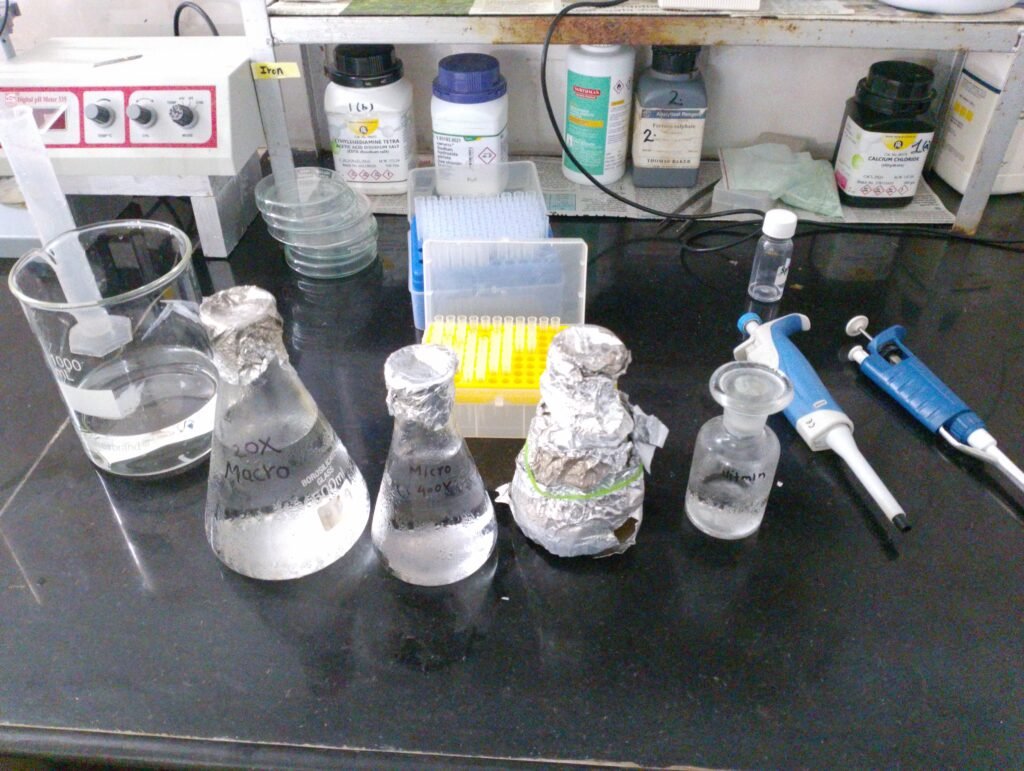
MEDIA PREPARATION
Murashige and Skoog (MS) media–500 ml
1.Take 250 ml DW in 1000 ml Jar.
2.Add below Items one by one,
a)Macro (20X)–25 ml
b)Micro (400X)–1.25 ml
c)Iron (400X)–1.25 ml
d)Vitamin (1000X)–0.5 ml
e)Mesoinositol–50 mg (0.05 gm)
f)Sucrose–15 gm
3.Make Final Volume 500 ml and adjust the pH 5.8–5.9
4.Add 4 gm Agar gel.
5.Boil it in microwave and pour into test tubes and wrap it.
6.Autoclave for 20 minutes at 121°c and 15 psi.
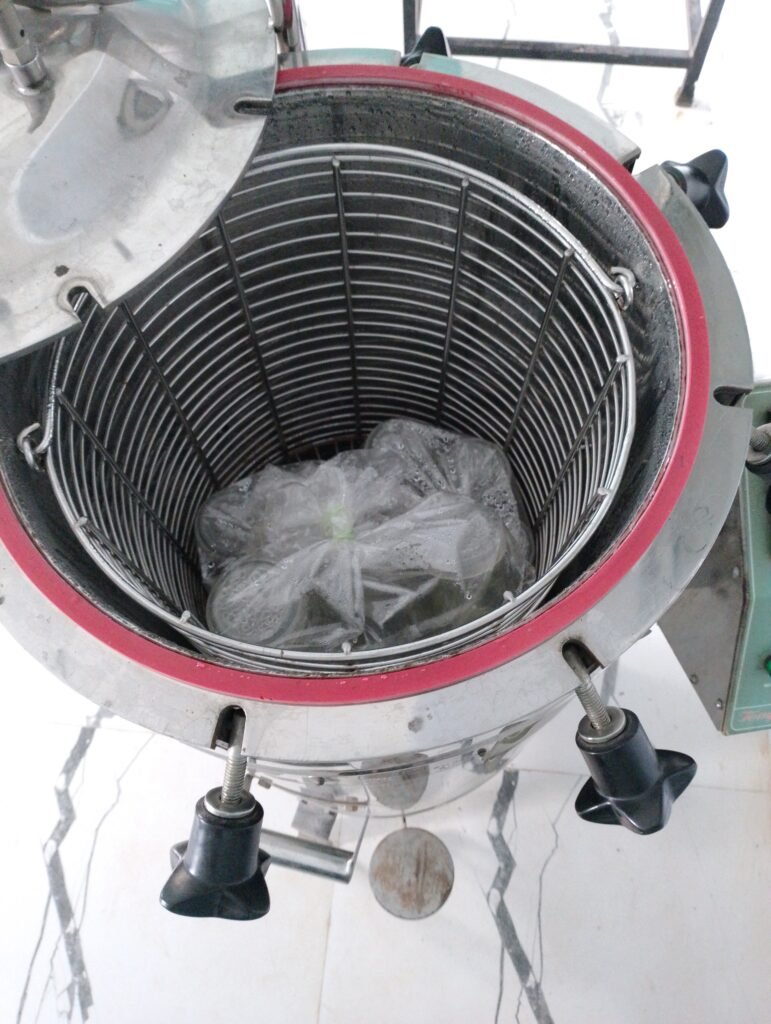
SURFACE Sterilization
1.Collect the ex-plant from parent material (Shoot or Seed etc.)
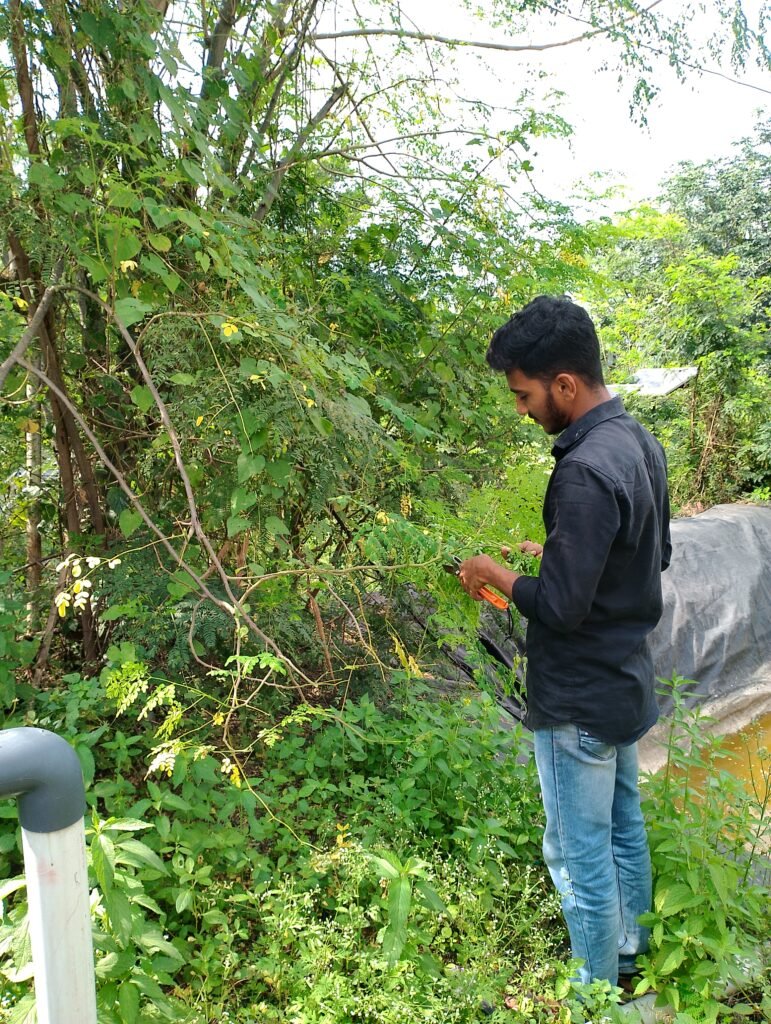
2.Surface Sterilization of ex-plant by following method:
STEP 1: Collect explant in distilled water jar in size of 1-2 inches .ie trim the explant to the desired size and shape.
STEP 2: Rinse the explant with tap water for 7-10 times.
STEP 3: Transfer the explant in 0.1% of bavistin solution for 1 min.
STEP 4:Repeat the rinse step 10-13 times with distiled water.
STEP 5:Rinse the explant thoroughly with liquid soap then rinse it with distilled water 5-6 times .
STEP 6:Rinse the explant thoroughly with Tween 20 .
STEP 7: Repeat the rinse step 8-10 times with distilled water.
STEP 8:Transfer the explant in 0.1% -0.4% of dettol solution for 2-3 min
STEP 9: Repeat the rinse step 3-5 times with distiled water.
.STEP 10:Rinse the explant thoroughly with sterile water.
STEP 11: Transfer the explant in 1mg/ml HgCl solution for 3 min.This step carried out under laminar air flow.
STEP 12:Repeat the rinse step 3-5 times with sterile water.
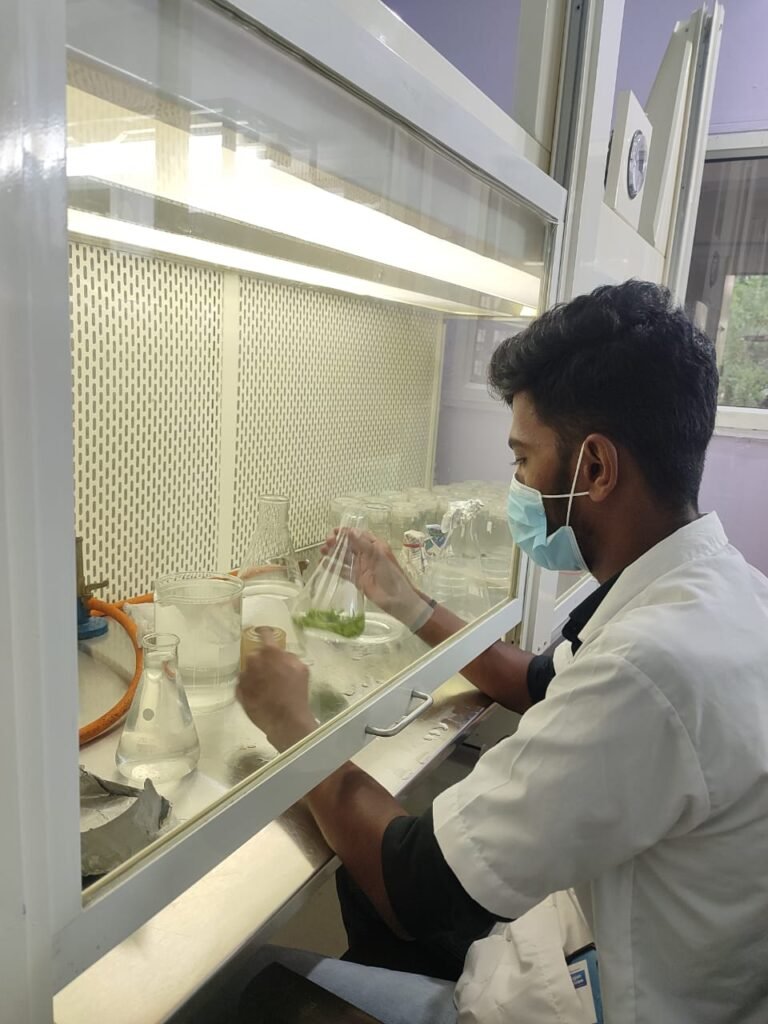
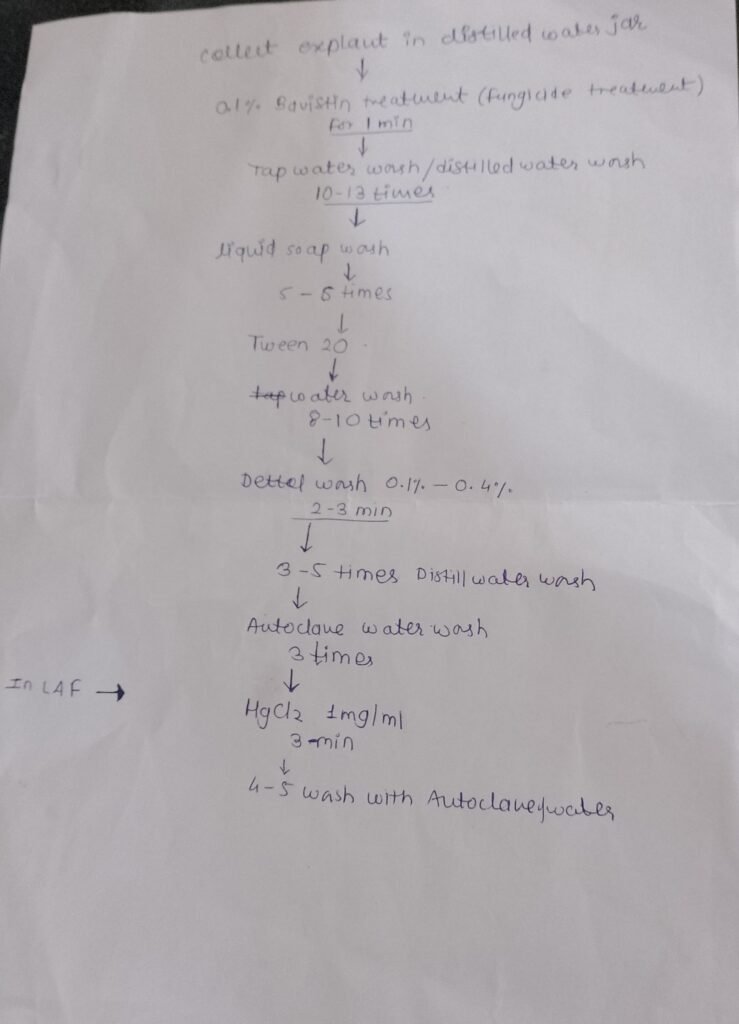
Pre-Inoculation Preparation
1.Clean the laminar with 70% Ethanol and turn on UV for 30 Minutes before inoculation.
2.After 30 minutes Switch to blower for 10 minutes
3.Autoclave the instruments like Petri plates, Forceps, Blade Holder, Blank conical flask (250 &500 ml) while autoclaving media.
INOCULATION OF CULTURE
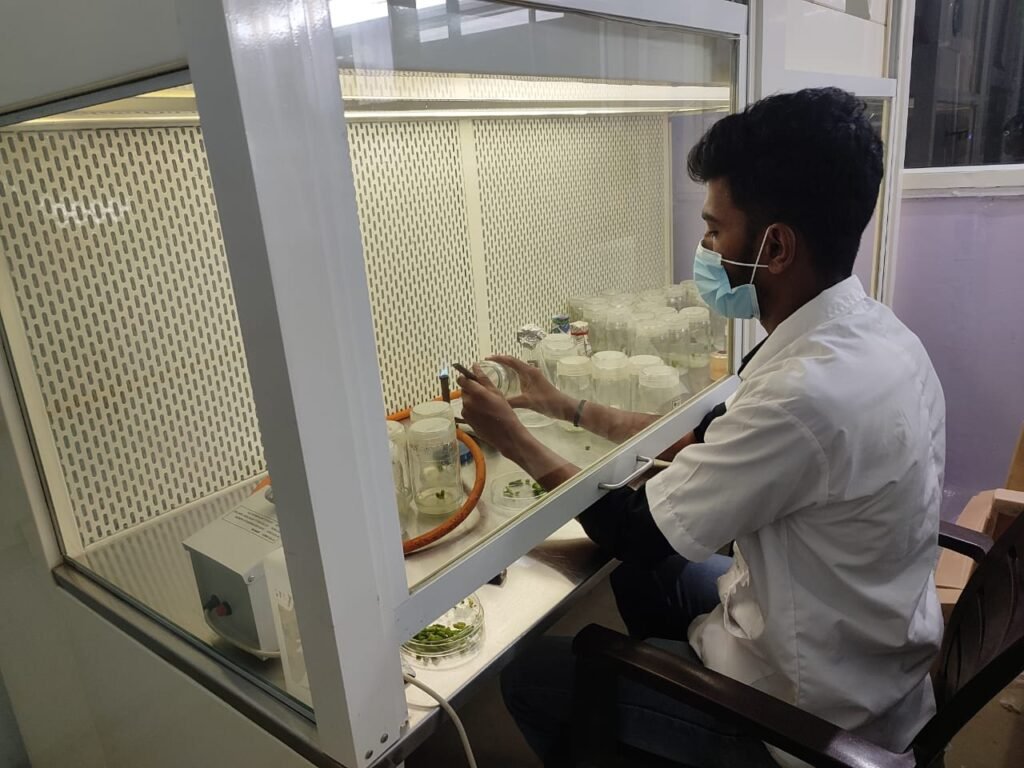
1.Laminar air flow was switched on and working area were sterilized.
2.The sterilized equipments, glassware’s, culture bottles and distilled water were then kept on the working area of Laminar Air Flow.
3.Surface sterilized explants were washed with doubled distilled autoclaved water for 2-3 times under Laminar Air Flow sterile condition.
4.Forceps and cutting blades were kept in glass bead sterilizer for surface sterilization.
5.Previously sterilized Petri plate was placed on the working area of Laminar Air Flow.
6.One by one explants were placed on the filter paper to soak up the extra water.
7.The nodal explants were then cut from both ends.
8.Finally, with the help of forceps the explants were inoculated on the surface of the Ms media in a such a way that ¾ part of the nodal explants would be in contact with Ms media.
9.Put cap on Test tubes or bottles and then wrap with paraffin tape.
INCUBATION:
- Place the culture vessel in a growth room or incubation chamber with suitable conditions (e.g., temperature, light, humidity)
- Temperature-25 degree celcius
- Light – 18 hrs dark +6 hrs light
Regularly check the culture for growth, contamination, and differentiation.
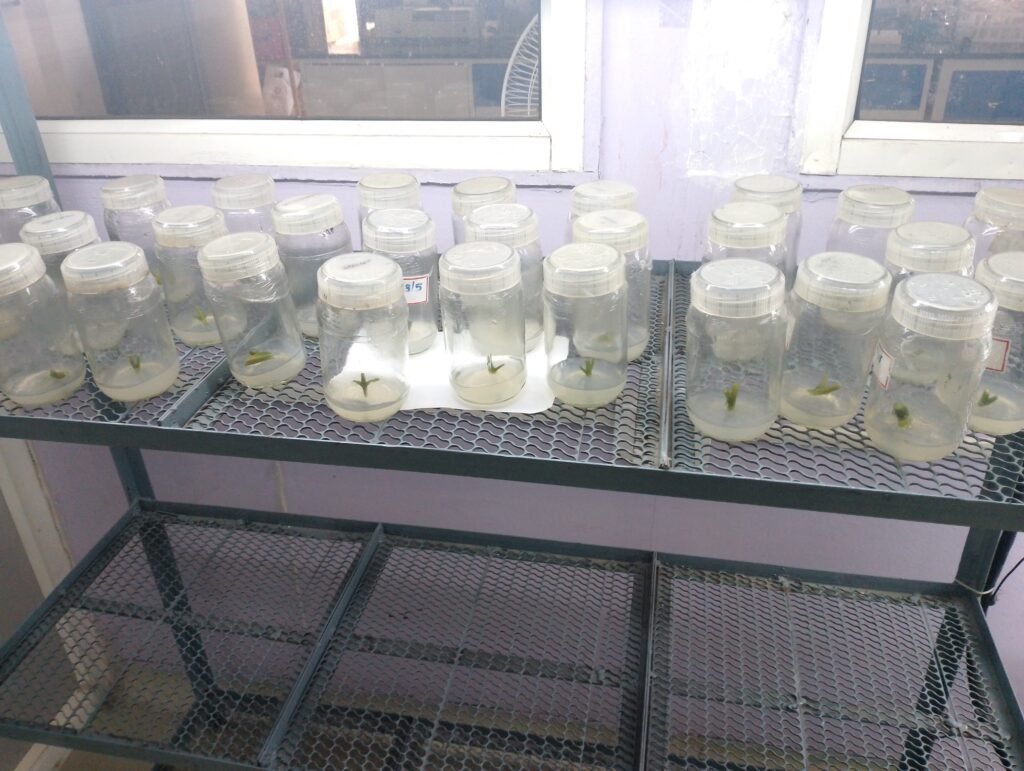
OBSERVATION
Daily Observation of Culture to avoid contamination.
